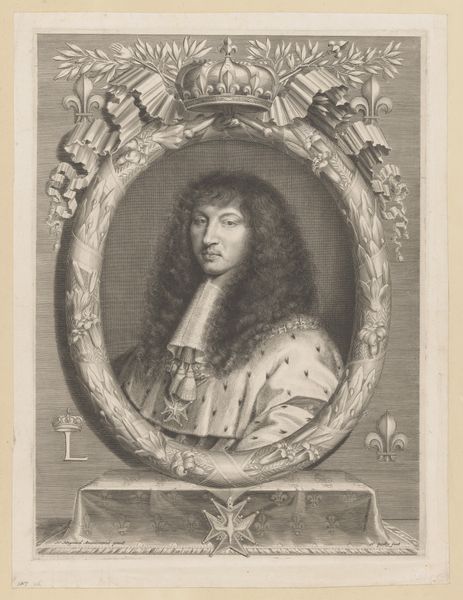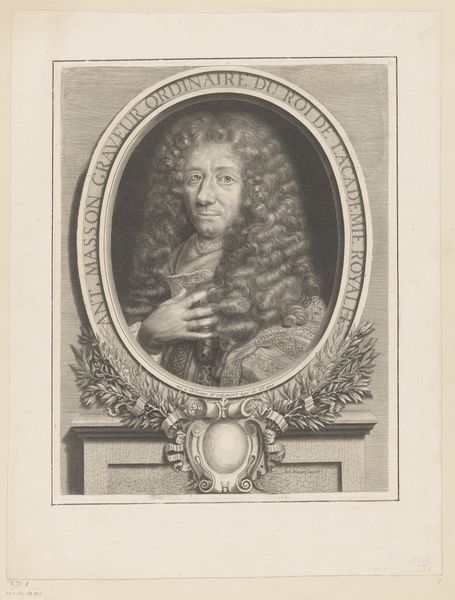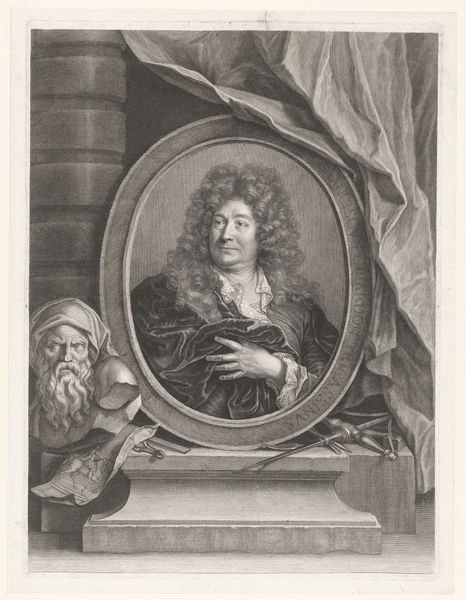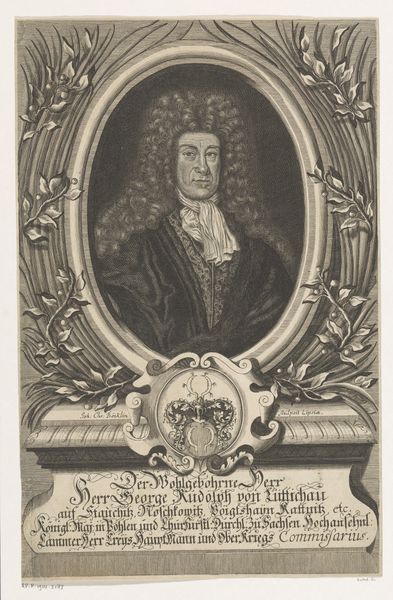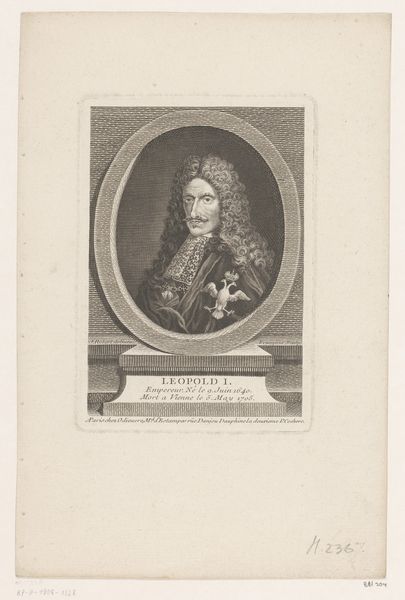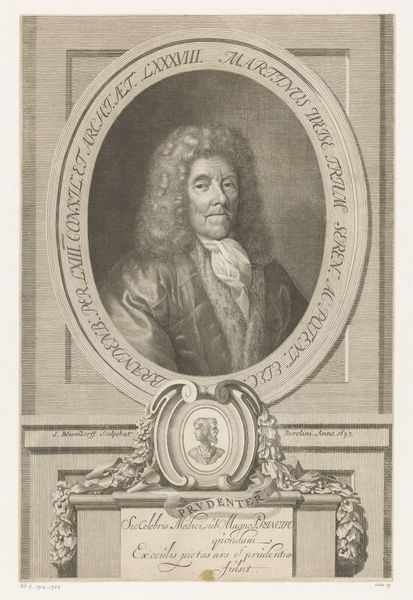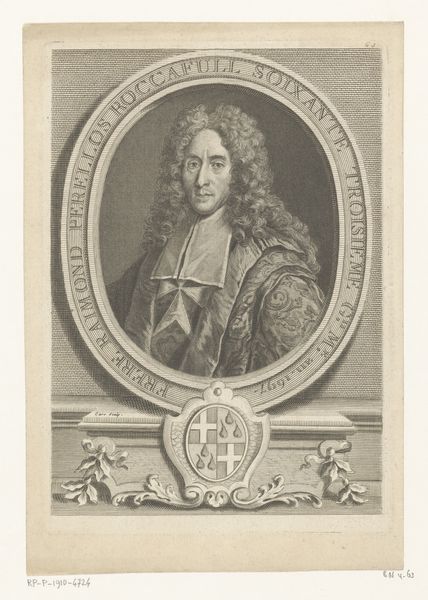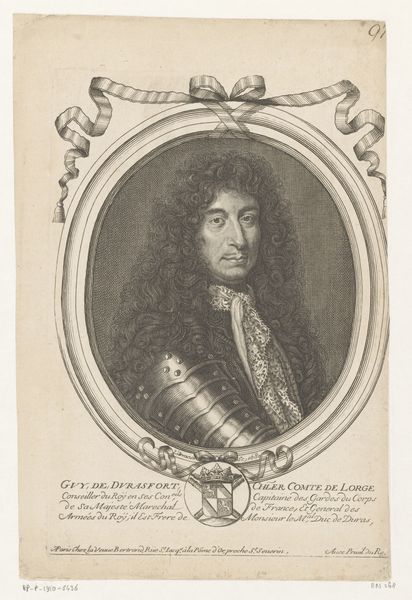
drawing, print, engraving
#
portrait
#
drawing
#
baroque
# print
#
old engraving style
#
history-painting
#
engraving
Dimensions: Plate: 10 3/4 × 9 1/4 in. (27.3 × 23.5 cm) Sheet: 16 1/4 × 10 3/16 in. (41.3 × 25.8 cm)
Copyright: Public Domain
Editor: So, this is Jacob Houbraken's "Portrait of George Savile, Marquis of Hallifax," an engraving from 1740. It has such incredible detail for a print! How would you unpack its complexities? Curator: I immediately think about the process involved. Engraving requires skilled labor, intense concentration. Consider the means of production in the 18th century. This wasn’t just about artistic skill; it was about workshop practices, access to materials like the copperplate and the tools, and a market for these prints. The portrait and the scene below represent two modes of consumption. Editor: So, you're focusing on how the artwork was made rather than just what it depicts. Curator: Precisely. Think about the social context too. This portrait serves as a commodity, a means of disseminating an image of power. Someone commissioned this, someone bought it, someone displayed it. It reinforces existing social structures, doesn’t it? Who had access to such items, and how did it reinforce class structures? Editor: That's interesting. I hadn't considered how the act of making and distributing art itself could be a commentary on society. I see your point. What is striking is the detailed drapery—it highlights how laborious this would have been. Curator: Exactly. Now, what does that tell you about the labor of image-making in this period? Editor: I now realize this artwork says a lot about 18th-century society just by understanding its material existence. Thanks! Curator: Indeed. Analyzing the materiality truly unveils fascinating perspectives often overlooked.
Comments
No comments
Be the first to comment and join the conversation on the ultimate creative platform.
